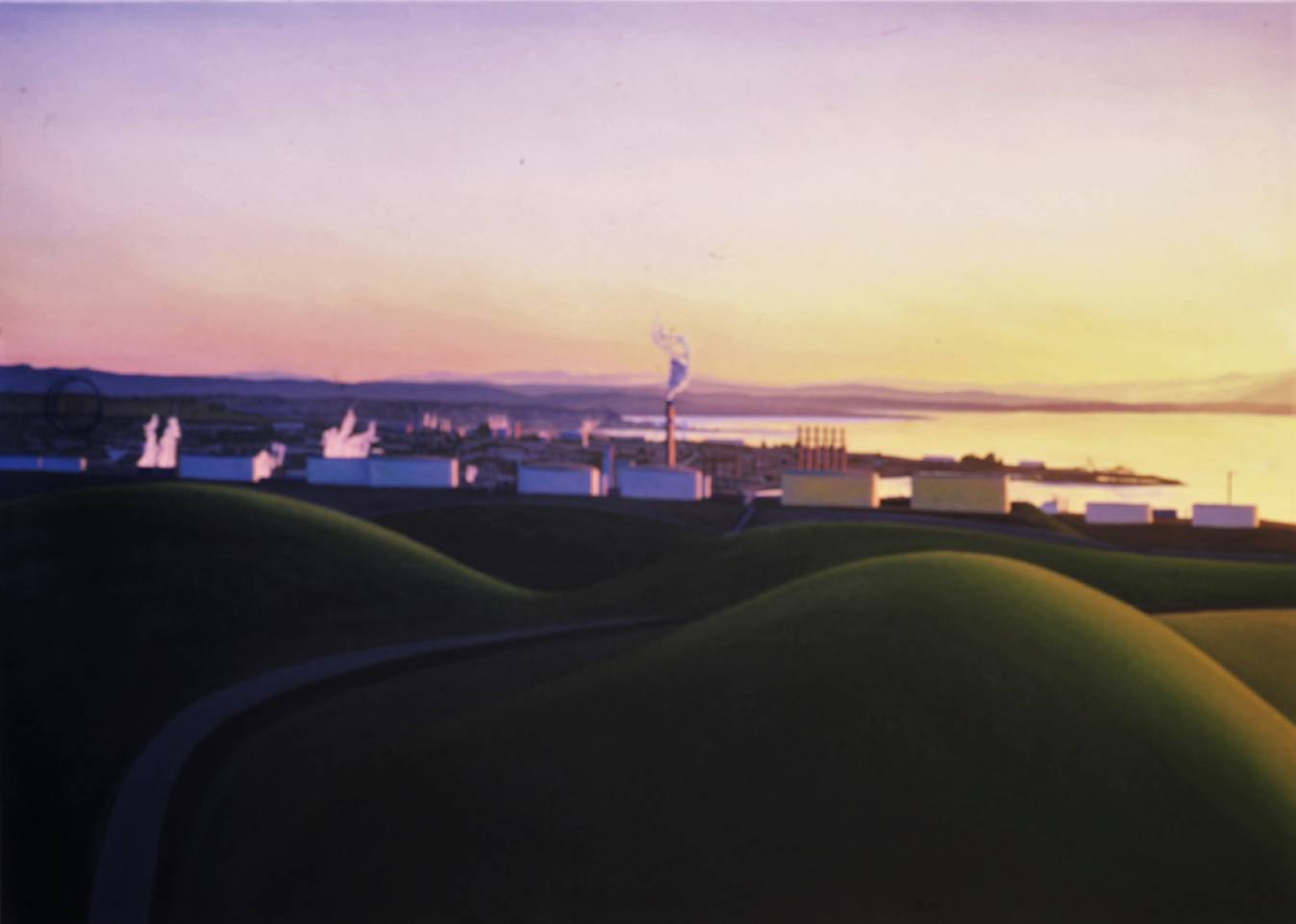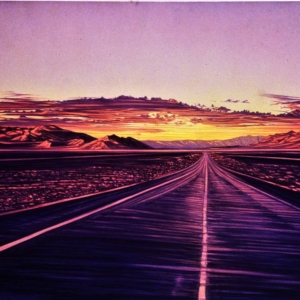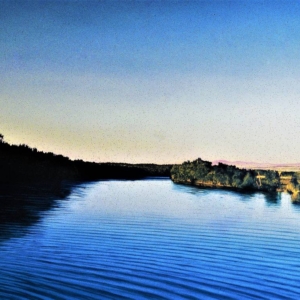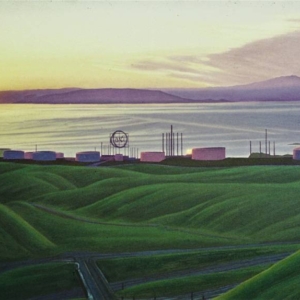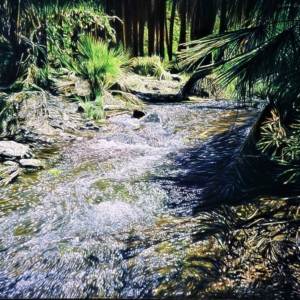with its rolling hills and majestic oaks, looking south toward the Pacific Ocean. As you can see from the series title, “Ikebana”, this piece is modeled after a traditional Japanese flower arrangement using a California native plant called Oso Easy as my focal point.
Using a variety of Nihon-ga (Japanese style) painting tools, I’ll show you how this was made.
First pencil in the horizon line and some evenly spaced dots for distant oak trees.
Using a plastic or rubber brayer, I applied straight Burnt Sienna oil paint in parallel strokes following the direction of the hills.
| Type of Medium | |
|---|---|
| Size of Painting |
Related Products
-
Nevada highway
The painting shows the smooth Nevada highway overlooking the sunset from the side. The scene was painted on the spot where there is a pullout area. The desert sands and a cooling breeze is shown with a cloudy evening sky in this painting.
-
Sacramento river #1
The Sacramento river is majestic. The river’s size is rather impressive. In normal times, it can accommodate several large ships at once. And of course, the main feature of the Sacramento river is the water. As you would expect, since it flows downstreams of numerous mountains, there are many good fishing points. This time I’ve only made a portrait photo…
-
76 Rodeo, CA.#2
The painting 76 Rodeo, CA. #2 was done after the work done in April 2010 when I visited an area about 30 miles east of Los Angeles that is known for its oil wells and industry along the freeway. The landscape is filled with hard edges and surrounded by a lot of pollution. When I was working on the oil…
-
Indian canyon #1, Palm Springs, CA.
In the early 1960s, art dealer Tita Kaye gave a solo exhibition of paintings by Agnes Martin to poet and publisher George Whitman. In addition to the show, she invited Whitman to visit her Palm Springs home, known as “Indian Canyon,” where–over glasses of wine–she suggested that he consider publishing a book by David McIntosh. Whitman readily agreed, and in…


